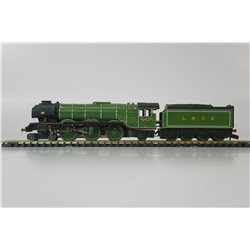It is possible to create overhead electrification for a model railway layout. This typically involves installing...
No products
Product successfully added to your shopping cart
There are 0 items in your cart. There is 1 item in your cart.
Search Tips
Christmas and New Year
We are dispatching orders every weekday apart from Christmas Day, Boxing Day and New Year's Day.
If you order is time critical, select next day delivery at checkout.
The shop in Sandown is closed from 25th December, reopening on 30th December.
What was the purpose of the deflector plates fitted to the front of some steam locomotives ?
Deflector plates, also known as smoke deflectors or smoke lifters, were fitted to the front of some steam locomotives for a specific purpose. These plates were typically seen on locomotives operating in countries with narrow tunnels or low bridges, where the smoke and steam emitted from the locomotive's chimney could potentially cause visibility issues or damage to infrastructure.
The main purpose of deflector plates was to redirect the smoke and steam upwards and away from the locomotive's cab and the line of sight of the train crew. By doing so, the plates helped improve visibility for the crew, especially when entering tunnels or passing under low bridges. This was particularly important for safety reasons, as it allowed the crew to have a clear view of the track ahead and any signals or potential obstacles.
In addition to improving visibility, deflector plates also helped reduce the amount of smoke and steam that could potentially damage infrastructure, such as tunnel linings or bridge structures. By deflecting the smoke and steam upwards, the plates prevented them from directly impacting or accumulating on these structures, thus minimizing the risk of corrosion or other damage.
It's worth noting that not all steam locomotives were equipped with deflector plates. Their use was more common in certain countries, such as Germany and France, where the railway infrastructure often had lower clearance heights. Their use in the United Kingdom was not as widespread, as the majority of the railway network had sufficient clearance for locomotives without them.
Overall, the purpose of deflector plates on steam locomotives was to improve visibility for the train crew and protect infrastructure from the potentially damaging effects of smoke and steam.
Click here to receive the tips weekly in your mailbox. You can unsubscribe at any time.








